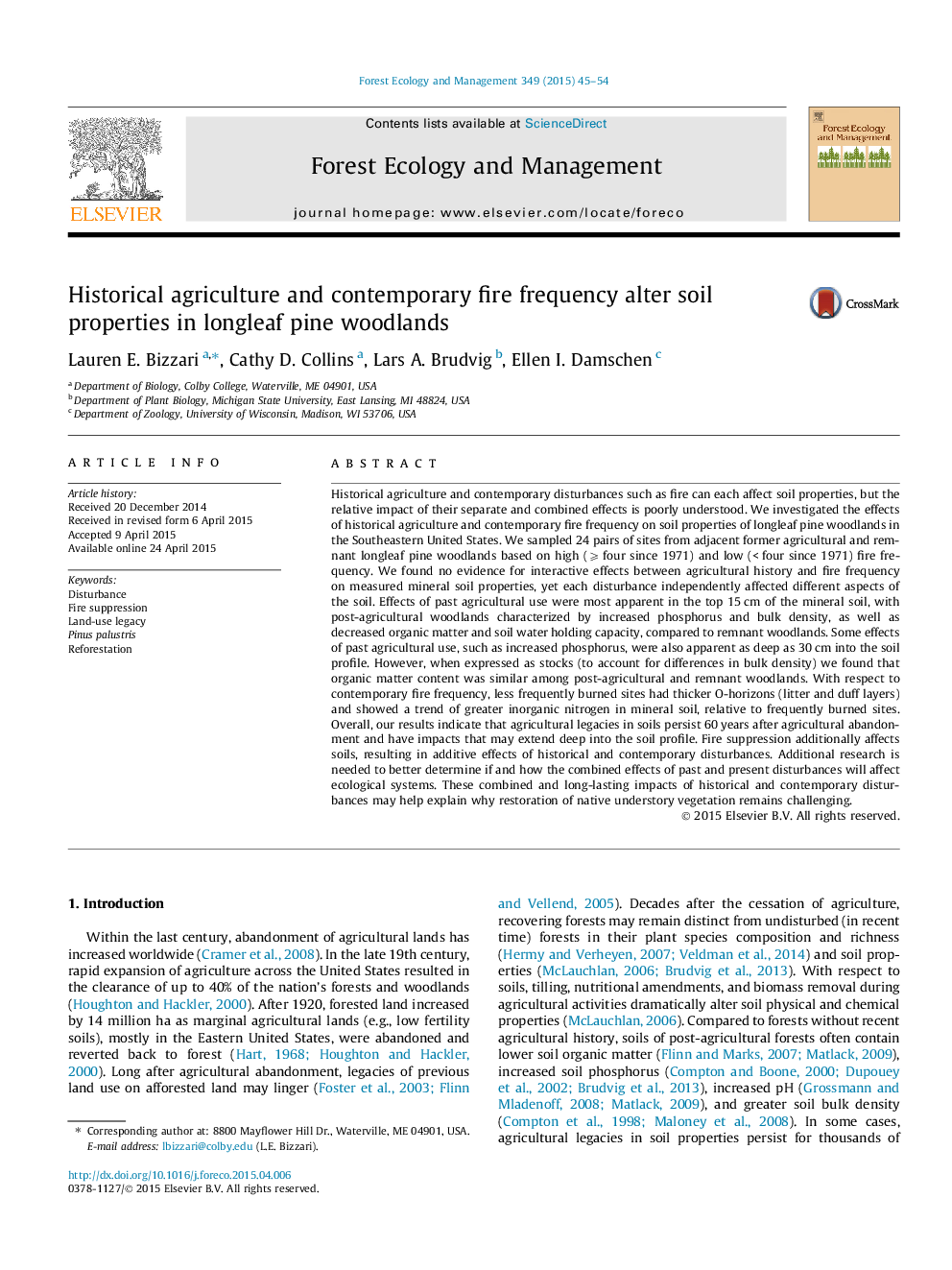| کد مقاله | کد نشریه | سال انتشار | مقاله انگلیسی | نسخه تمام متن |
|---|---|---|---|---|
| 86270 | 159175 | 2015 | 10 صفحه PDF | دانلود رایگان |
• We studied how historical agriculture and contemporary fire frequency alter soils.
• We detected legacies of agriculture in longleaf pine soils after 60+ years.
• Contemporary fire frequency affected few properties relative to agricultural history.
• No interactive effect of historical and contemporary disturbances on woodland soils.
Historical agriculture and contemporary disturbances such as fire can each affect soil properties, but the relative impact of their separate and combined effects is poorly understood. We investigated the effects of historical agriculture and contemporary fire frequency on soil properties of longleaf pine woodlands in the Southeastern United States. We sampled 24 pairs of sites from adjacent former agricultural and remnant longleaf pine woodlands based on high (⩾ four since 1971) and low (< four since 1971) fire frequency. We found no evidence for interactive effects between agricultural history and fire frequency on measured mineral soil properties, yet each disturbance independently affected different aspects of the soil. Effects of past agricultural use were most apparent in the top 15 cm of the mineral soil, with post-agricultural woodlands characterized by increased phosphorus and bulk density, as well as decreased organic matter and soil water holding capacity, compared to remnant woodlands. Some effects of past agricultural use, such as increased phosphorus, were also apparent as deep as 30 cm into the soil profile. However, when expressed as stocks (to account for differences in bulk density) we found that organic matter content was similar among post-agricultural and remnant woodlands. With respect to contemporary fire frequency, less frequently burned sites had thicker O-horizons (litter and duff layers) and showed a trend of greater inorganic nitrogen in mineral soil, relative to frequently burned sites. Overall, our results indicate that agricultural legacies in soils persist 60 years after agricultural abandonment and have impacts that may extend deep into the soil profile. Fire suppression additionally affects soils, resulting in additive effects of historical and contemporary disturbances. Additional research is needed to better determine if and how the combined effects of past and present disturbances will affect ecological systems. These combined and long-lasting impacts of historical and contemporary disturbances may help explain why restoration of native understory vegetation remains challenging.
Journal: Forest Ecology and Management - Volume 349, 1 August 2015, Pages 45–54
